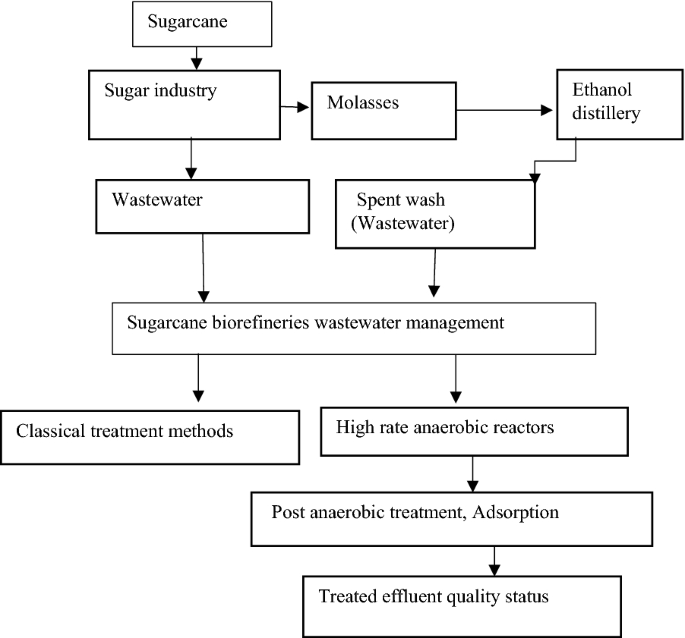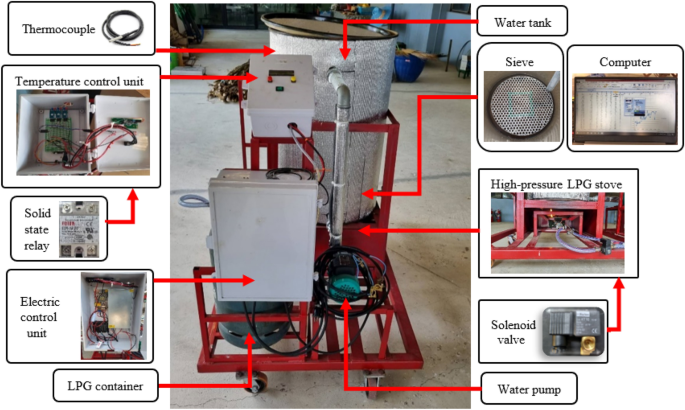Products From Sugarcane vs. Petroleum-Based Alternatives: A Comparison
Products From Sugarcane vs. Petroleum-Based Alternatives: A Comparison
Blog Article
Discover the Ingenious Benefits of Products From Sugarcane for Lasting Living
Sugarcane has emerged as a crucial resource in the quest for lasting living. Its varied applications span eco-friendly product packaging, renewable resource, and healthier food choices. As sectors look for green choices, sugarcane's versatility uses encouraging solutions. The real capacity of sugarcane prolongs beyond its current uses. Discovering its innovative benefits could reveal brand-new paths towards a more sustainable future. What other opportunities might this remarkable plant hold?

The Rise of Sugarcane as a Sustainable Source
As worldwide awareness of ecological issues expands, sugarcane has actually emerged as a popular sustainable source. This flexible crop supplies an array of benefits that add to eco-friendly techniques. Sugarcane is a renewable energy, qualified of prospering in varied climates while taking in carbon dioxide, thus minimizing greenhouse gas emissions. Its quick growth cycle enables frequent harvesting, causing a continual supply of raw material.Additionally, sugarcane farming usually requires much less water compared to various other plants, making it an efficient choice in water-scarce areas. The spin-offs of sugarcane, such as bagasse and molasses, can be repurposed for various applications, reducing waste and advertising circular economic situation concepts. Additionally, innovations in farming methods have resulted in even more sustainable farming approaches, even more boosting sugarcane's ecological account. As customers increasingly seek sustainable alternatives, sugarcane stands apart as a viable alternative for those dedicated to reducing their eco-friendly impact.
Eco-friendly Product Packaging Solutions
Exactly how can biodegradable packaging services change the way customers approach sustainability? By making use of sugarcane-based products, these cutting-edge options supply a compelling choice to conventional plastics. Biodegradable packaging made from sugarcane disintegrates naturally, substantially decreasing garbage dump waste and greenhouse gas emissions. As customers come to be progressively conscious of their environmental impact, the need for sustainable packaging proceeds to rise.These sugarcane-derived items not just offer practical objectives yet also straighten with eco-conscious consumer values. They offer a substantial method for businesses and individuals to add to a circular economic climate, promoting source performance and lessening ecological footprints. Additionally, as markets take on biodegradable alternatives, they promote a culture of sustainability that reverberates with a growing demographic looking for accountable choices.In significance, biodegradable product packaging options from sugarcane stand for an important progression in sustainable techniques, encouraging customers to make eco-friendly decisions without sacrificing comfort or top quality.
Renewable Energy Generation From Sugarcane
A significant part of eco-friendly power generation can be stemmed from sugarcane, showcasing its adaptability past traditional farming uses. Sugarcane biomass, consisting of bagasse and leaves, is a powerful source for bioenergy manufacturing. This biomass can be exchanged biofuels such as ethanol, which works as a cleaner choice to fossil gas. Additionally, the combustion of sugarcane results creates steam and electrical energy, providing a power resource for sugar mills and nearby communities.The cultivation of sugarcane also adds to carbon sequestration, as the plants soak up co2 during their growth cycle. By using sugarcane for energy, waste is minimized, and lasting techniques are encouraged. This sustainable power approach not only sustains power requirements yet also advertises rural advancement, developing work in bioenergy industries. Generally, sugarcane attracts attention as a crucial player in the shift to lasting power remedies, aligning with global efforts to decrease carbon impacts.

Eco-Friendly Textiles and Fabrics
Environment-friendly textiles and fabrics originated from sugarcane offer an encouraging option to conventional products. These biodegradable choices not just reduce ecological influence however additionally provide durability and performance equivalent to standard textiles. Sustainable production processes further boost their charm, making them an integral part of a sustainable lifestyle.
Biodegradable Textile Alternatives
Why is the adjustment toward biodegradable textile options vital for sustainable living? The raising awareness of environmental degradation has triggered a search for choices to conventional fabrics, which usually add to contamination and waste. Eco-friendly fabrics, originated from sustainable sources such as sugarcane, use an appealing option. These products break down normally, decreasing landfill buildup and decreasing ecological effect. Furthermore, they can aid reduced carbon impacts and dependence on fossil gas. As consumers become more eco-conscious, the demand for lasting fabrics grows, motivating producers to spend and innovate in eco-friendly alternatives. This modification not only sustains sustainable practices however additionally cultivates a round economic climate, paving the method for a more responsible strategy to style and textile manufacturing.
Sturdiness and Performance
When reviewing environment-friendly textiles and fabrics, longevity and efficiency are vital elements. Sugarcane-derived products demonstrate impressive stamina and resilience, making them ideal for numerous applications. These fabrics usually exhibit superior moisture-wicking residential properties, which enhance convenience in day-to-day wear. Furthermore, their natural fibers add to breathability, guaranteeing that garments stay wearable and fresh also in demanding problems. The efficiency of click for more sugarcane-based fabrics encompasses their resistance to tear and put on, permitting items to maintain their integrity over time. These environment-friendly fabrics can be treated to boost UV security and discolor resistance, meeting the useful requirements of customers without compromising sustainability. Eventually, sugarcane textiles use an unified balance of toughness and performance, appealing to environmentally mindful individuals.
Sustainable Manufacturing Processes
The outstanding resilience and efficiency of sugarcane-derived fabrics are matched by lasting manufacturing processes that focus on ecological responsibility. These processes make use of sustainable sources, decreasing reliance on nonrenewable fuel sources and lowering carbon impacts. By taking advantage of the byproducts of sugarcane growing, suppliers can create environmentally friendly textiles while promoting waste decrease. Advanced methods, such as water-efficient dyeing and eco-friendly therapies, better improve the sustainability of these fabrics. Additionally, the use of non-toxic chemicals assurances that the production procedure does not hurt environments or human health and wellness. This commitment to sustainability not just interest ecologically mindful consumers but additionally sustains regional economic climates by advertising sustainable farming techniques. Generally, sugarcane-derived textiles stand for a considerable step in the direction of a greener future in the fashion industry.
Sugarcane-Based Biofuels and Their Effect

Sugarcane-based biofuels have arised as a substantial alternative power source, supplying a sustainable remedy to the world's growing energy needs. These biofuels, originated from the fermentation of sugarcane juice or molasses, present an even more lasting choice compared to fossil gas. Their production procedure creates reduced greenhouse gas emissions, adding to environment modification mitigation efforts.Additionally, sugarcane biofuels can boost power security by branching out power sources and minimizing reliance on imported oil. The growing of sugarcane likewise advertises country development, creating work and promoting regional economies.However, concerns concerning land use and food competitors linger, as raised biofuel manufacturing may affect food supply chains. Sustainable agricultural practices are vital to balancing these ensuring and contending rate of interests that biofuel manufacturing does not undermine food protection. On the whole, sugarcane-based biofuels stand for an encouraging method for a greener power future, offered that their social and ecological implications are thoroughly managed.
Much Healthier Alternatives: Sugarcane in Food Products
While numerous customers look for healthier choices in their diet regimens, sugarcane items offer a healthy choice to improved sugars and fabricated sweeteners. Obtained from the natural extraction of sugarcane juice, these items retain necessary nutrients, consisting of minerals and vitamins, that are commonly shed in refined sugars. Sugarcane includes antioxidants and nutritional fiber, adding to total health and wellness and wellness.Many health-conscious individuals are turning to sugarcane syrup and jaggery, which provide a reduced glycemic index contrasted to traditional sugars, making them ideal for those taking care of blood glucose degrees. Additionally, sugarcane-derived sugar can enhance the flavor of different recipes without the adverse results linked with fabricated additives.This change in the direction of natural artificial sweetener not only promotes far better nutritional options but also straightens with sustainable living practices, as sugarcane is an eco-friendly source. Sugarcane items are emerging as favorable choices in the domain name of food items.
The Future of Sugarcane in Sustainable Developments
The future of sugarcane is positioned to incorporate ingenious applications that extend past typical uses. Its prospective as a source for naturally degradable product packaging solutions and renewable resource sources highlights its role in lasting practices. Checking out these advancements might substantially impact ecological conservation and source monitoring.
Naturally Degradable Product Packaging Solutions
A raising number of firms are turning to eco-friendly product packaging options originated from sugarcane as an appealing option to conventional plastics. These company website cutting-edge products, commonly made from sugarcane fibers and bioplastics, decompose normally, reducing the resilient ecological effect related to traditional plastic waste. By utilizing sustainable sources, sugarcane-based packaging adds to a much more lasting production cycle, aligning with global initiatives to deal with contamination and climate adjustment. Furthermore, these remedies often preserve the resilience and capability required for numerous applications, from food containers to shipping products. As consumer need for environment-friendly options expands, businesses adopting sugarcane product packaging not just enhance their brand image however also play an essential role in cultivating a round economic situation, leading the way for a greener future.
Renewable Power Resources
Naturally degradable product packaging services are just one element of the wider possibility of sugarcane in advertising sustainability. An additional substantial application hinges on eco-friendly power resources. Sugarcane is a versatile crop that can be made use of to create biofuels, such as ethanol, which acts as a cleaner alternative to nonrenewable fuel sources. The fermentation procedure of sugarcane juice returns ethanol that can power lorries and produce electricity. Furthermore, the results of sugarcane handling, like bagasse, can be made use of to produce biomass power, offering a reliable and sustainable technique to harness energy. This double duty as both a resource of biofuel and biomass highlights sugarcane's possibility in minimizing carbon discharges and sustaining a shift to an extra sustainable power landscape in the redirected here future.
Often Asked Inquiries
Just How Is Sugarcane Harvested Sustainably?
Sugarcane harvesting can be lasting via techniques like manual cutting, which decreases soil disturbance, and making use of machinery that minimizes gas consumption (Products From Sugarcane). Plant turning and integrated pest administration additionally improve environmental health and wellness and advertise long-lasting soil fertility
What Are the Ecological Effects of Sugarcane Farming?

Can Sugarcane Products Be Reused?
The concern of whether sugarcane products can be reused discloses a favorable outlook. Lots of sugarcane-derived products, such as bioplastics and packaging, are made for recyclability, contributing to an extra sustainable waste administration strategy within environmental considerations.
Exist Any Drawbacks to Using Sugarcane-Based Products?
The drawbacks of using sugarcane-based products consist of prospective land usage competition with food plants, obstacles in large manufacturing, and issues concerning the ecological effect of monoculture farming methods, which can diminish biodiversity and dirt wellness.
Exactly How Does Sugarcane Farming Affect Citizen Communities?
Sugarcane growing effects local areas by providing employment possibility and boosting regional economic situations. However, it can likewise cause land disputes and ecological issues, impacting agricultural techniques and community health, requiring a balanced method to development. Improvements in agricultural techniques have actually led to more lasting farming techniques, even more boosting sugarcane's environmental profile. In addition, the burning of sugarcane results produces vapor and electricity, providing an energy resource for sugar mills and close-by communities.The growing of sugarcane additionally adds to carbon sequestration, as the plants absorb carbon dioxide throughout their growth cycle. By using sugarcane for power, waste is lessened, and sustainable practices are urged - Products From Sugarcane. Sugarcane includes anti-oxidants and dietary fiber, contributing to general health and wellness.Many health-conscious individuals are turning to sugarcane syrup and jaggery, which give a lower glycemic index compared to conventional sugars, making them ideal for those handling blood sugar levels. In addition, the results of sugarcane handling, like bagasse, can be utilized to generate biomass power, using a effective and lasting method to harness power
Report this page